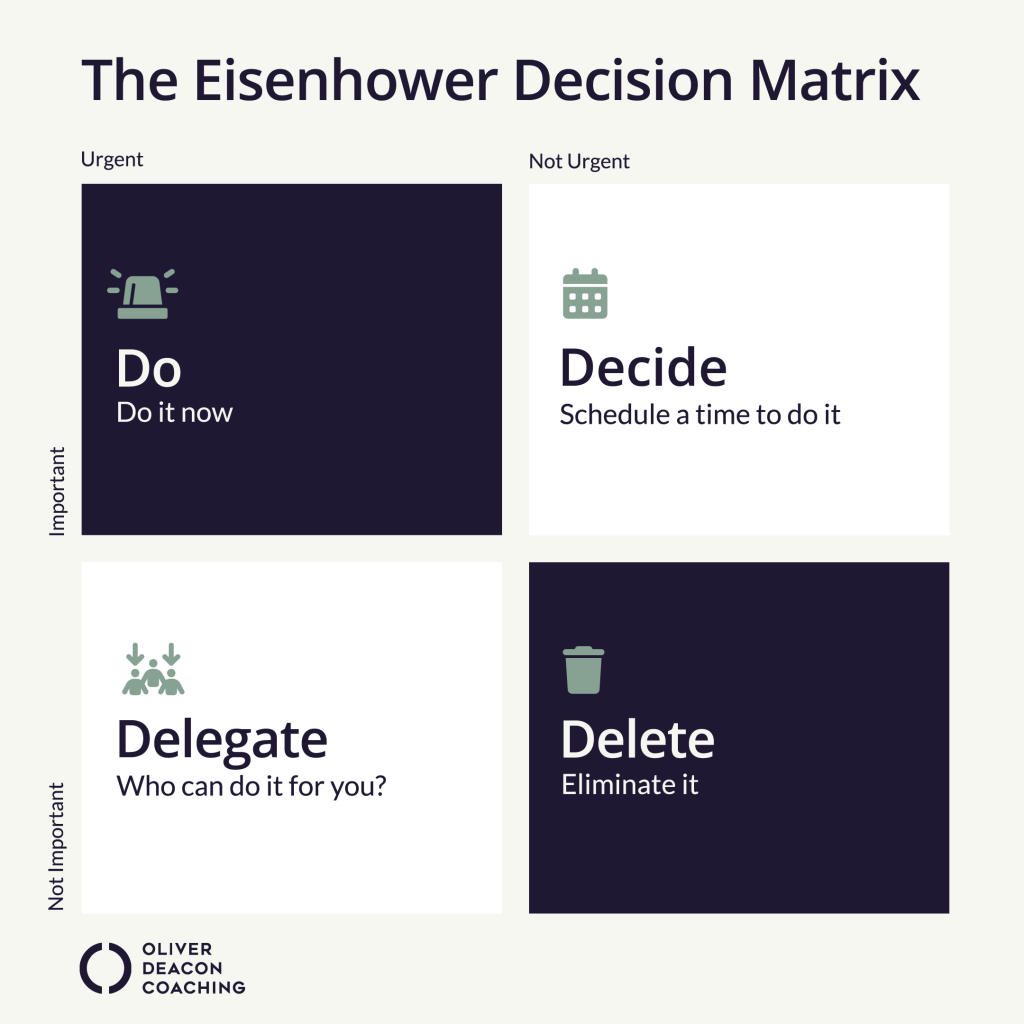We’ve all been there. You start the day with a reasonable to-do list, but 5pm rolls around and you still have tasks un-ticked. Sometimes, it just feels like there aren’t enough hours in the day. So how do you increase your productivity at work?
Here are a few productivity habits that can help you to reclaim these hours and make the most out of your day.
Choose the right things to do
A big percentage of the time you ‘lose’ in a day is spent doing unnecessary, inefficient, or otherwise ‘wrong things’. Instead, you want to be focusing on tasks that will help you to get the job done. To start with, figure out what exactly your ‘big goals’ are, and what tasks you need to do in the short term, to help you achieve them.
Now, I know what you’re thinking, and you’re right, not every piece of work you do in a day is 100% business-critical. But these are the tasks that you should focus on getting out of the way first. That way, once your main tasks are over and done with, you can tackle those ‘unimportant’ but necessary tasks.
Don’t max yourself out
A lot of people tend to plan their days hour-by-hour from 9-5pm, (with a small gap for lunch). But it turns out that maxing yourself out can actually be counterproductive. You need to plan for the unexpected, and for your own downtime.
A general rule of thumb that I advise those around me is to plan for 60% of your time. The next time you’re planning your day, create a list of the things that have to get done and then estimate the time you will need to complete each one. Now draw a line through where 60% of your time is. That’s generally what you can get done in any given day.
Consider the Eisenhower Matrix
Finally, one of the best tools for deciding on your priorities, and boosting your efficiency is the Eisenhower Matrix.
Now you’ve probably heard about this before, but the Eisenhower matrix lets you sort your tasks according to four labels, Urgent, Not Urgent, Important, and Not Important. This means every one of your tasks will fall into one of four categories, Urgent Important, Urgent Not Important, Important Not Urgent, or Not Urgent Not Important.
The mistake most people make when using this matrix is by focusing solely on the Important Urgent tasks. However, I advise my clients to spend as much time as possible in the important non urgent box.
This is where all of your long-term goal work gets done. Not only does this help you to set the foundations of your bigger picture, but it has the added benefit of letting less things slip through to the urgent important box.

Focus on one thing at a time
On average, when you switch tasks, it takes over 20 minutes to get back into the flow of where you were before. When you reduce the amount of projects that you are juggling at any one time, you can significantly reduce the amount of time you spend switching between tasks.
Now that’s all well and good, but sometimes all it takes to make you switch tasks is one email. You might think to yourself “oh that’s just a 2 minute task, I’ll do that quickly and get back”. But that 2-minute task will cost you 20 minutes of work when you come back.
Instead, try and block out times of your day for the focus work. A great way to do this is to switch on your ‘out of office’ from 10-12, and again from 1-3. This way you can focus on getting your work done during those times, and then you can deal with emails and quick tasks afterwards.
Establish Healthy Communication
Another way to save on valuable time is to establish good communication habits. Many people pride themselves on being available then and there, wherever and whenever, to help people with their problems. And this might be great for others, but if you spend all your time responding to every query as soon as it is asked of you, you’ll never get anything done!
Now, for all their many benefits, this is where asynchronous chat software such as Teams, Slack or Google Workspace can be detrimental. People see these instant messaging apps and expect your answers to be just that… instant.
One way to work around this is by setting clear rules and boundaries for communication. By telling yourself, and others around you that you will only reply to non-urgent queries between certain hours of the day. If people message you outside of these times, their issues can be put into a list for you to get back to when you have the time.
Need some extra help?
Through my bespoke coaching and mentoring programmes, I coach great finance leaders, individuals and teams on productivity, leadership, people management and career guidance. Enabling them to become even better versions of themselves!
If you’re still struggling with your day-to-day workload, why not get in touch with me today and book a free 30-minute discovery session? Together we can lay out an action plan, and help you to understand what personal coaching could do for you.



